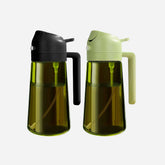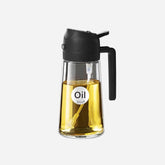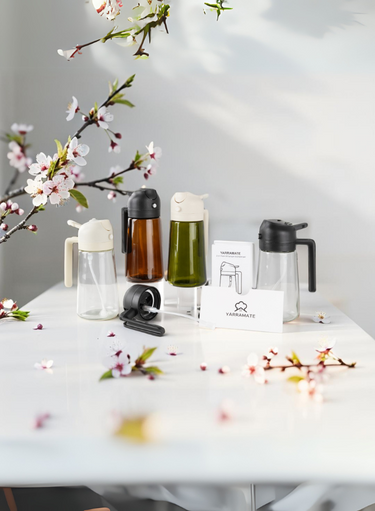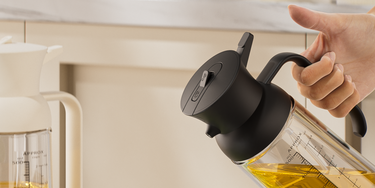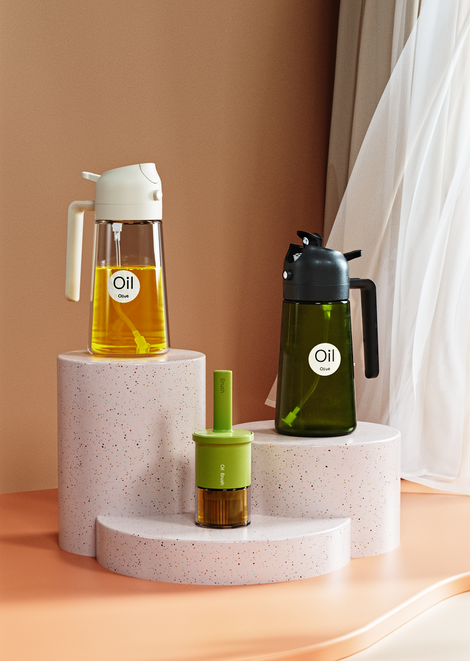Why Is My Oil Sprayer Not Working? 10 Fixes You Can Try Today
How to Fix a Broken Oil Sprayer
Let's face it: a broken oil sprayer can turn your kitchen groove into a grease-fueled nightmare. Whether you're trying to mist avocado oil over an air fryer feast or drizzle olive oil on a salad, a malfunctioning dispenser is downright annoying. But don't toss it just yet! We're breaking down the top reasons oil sprayers fail and sharing simple fixes—no fancy tools or tech skills required.
If your spray bottle suddenly stops working, the good news is most problems can be solved at home in minutes. From clearing clogs to adjusting the pump mechanism, simple maintenance can restore a smooth, even mist. In this guide, you'll learn the most common reasons spray bottles break and exactly what to do for each issue—so you can get back to cooking without frustration.

Quick Fix Directory
- Unclog the sprayer nozzle and tube
- Avoid overfilling the oil container
- Repair or replace a broken pump mechanism
- Choose the right type of oil for your sprayer
- Clean the sprayer regularly to prevent residue buildup
- Replace any missing small parts (O-rings, caps, seals)
- Protect the sprayer from heat and humidity damage
- Use the sprayer only with room-temperature or cool oils
- Clear a blocked vent hole for proper pressure
- Upgrade to a new, durable oil sprayer if repairs fail
1. Is Your Oil Sprayer Clogged? (Here’s How to Unblock It)
Clogs are the #1 culprit behind a non-working sprayer. Over time, oil residue builds up in the nozzle or tube, especially if you're using thicker oils like coconut or infused varieties.
Pro tip: Avoid using oils with particles (e.g., herbs, garlic) in sprayers without filters.
2. Did You Overfill the Oil Dispenser?
Overfilling is a sneaky problem. Most oil dispenser bottle glass or plastic models have a “max fill” line for a reason. Excess oil can flood the pump mechanism, causing leaks or weak sprays.
3. Is the Pump Mechanism Broken?
If your oil dispenser with handle feels loose or won't press down, the pump might be damaged. This often happens after accidental drops or rough handling.
4. Are You Using the Wrong Type of Oil?
Not all oils work in every sprayer. Thick oils (e.g., sesame, cold-pressed olive oil) can gum up thinner nozzles. Meanwhile, air fryer oil mister devices often work best with low-viscosity oils.
5. Did You Forget to Clean It Regularly?
Oil residue isn't just messy—it's a sprayer killer. Left uncleaned, it hardens and blocks airflow. This is especially true for vinegar oil dispenser models, since vinegar can corrode parts over time.
6. Is the Sprayer Missing a Critical Part?
Lost a tiny O-ring or nozzle cap? Even small missing pieces can ruin functionality. Check if the sprayer has:
- A tight seal around the pump
- An intact nozzle
- All screws/caps in place
7. Did Humidity or Heat Warp the Components?
Leaving your sprayer near the stove or in direct sunlight can warp plastic parts or melt seals. Glass bottles are safer, but metal springs in pumps can still rust.
8. Is the Sprayer Designed for Cold Use Only?
Some sprayers aren't built for heated oils. Pouring warm oil into a oil dispenser with handle made for room-temperature use can warp the plastic or crack glass.
9. Have You Checked the Vent Hole?
Many sprayers have a tiny vent hole to regulate pressure. If it's blocked, the pump won't create enough mist.
10. Is It Time to Upgrade Your Sprayer?
If you've tried everything and your sprayer still sputters, it might be time for a replacement. Look for:
- Durable materials (e.g., borosilicate oil dispenser bottle glass)
- Adjustable nozzles
- Easy-clean designs




